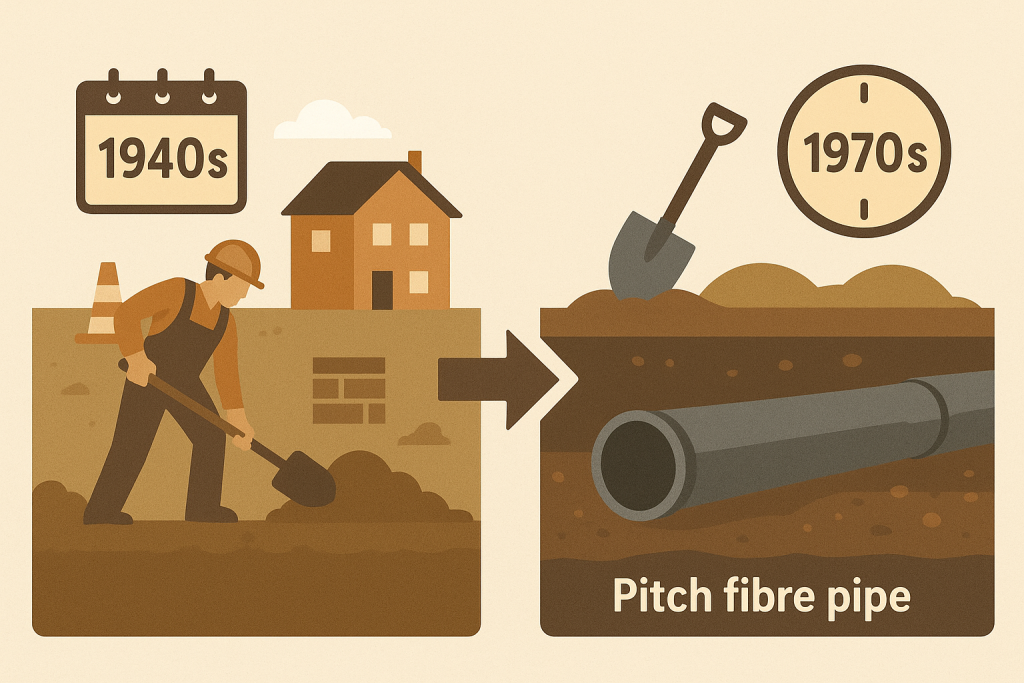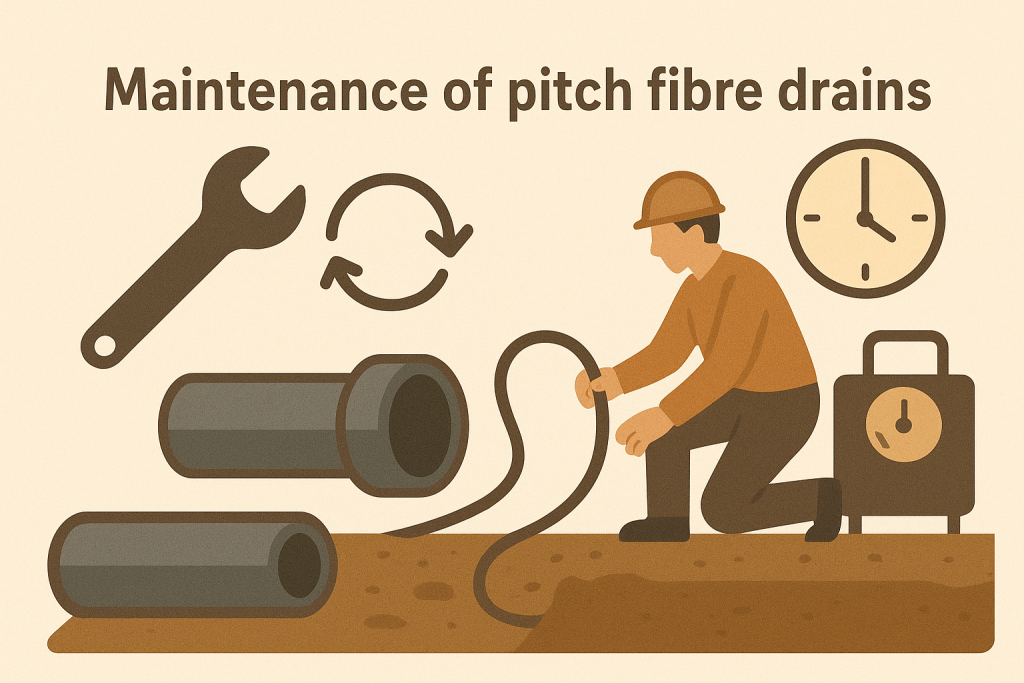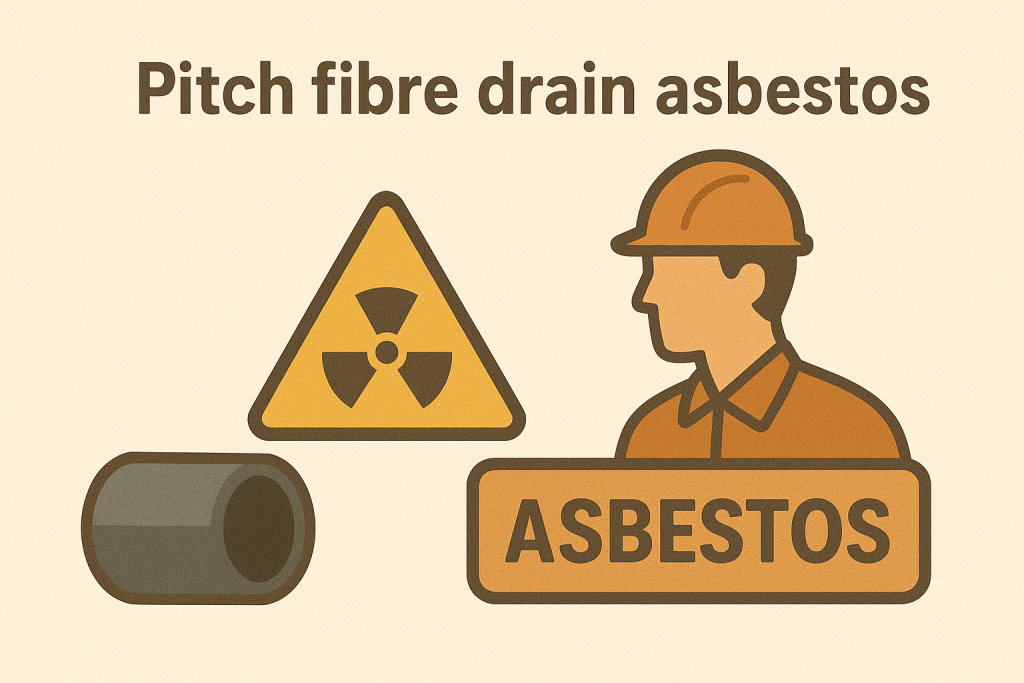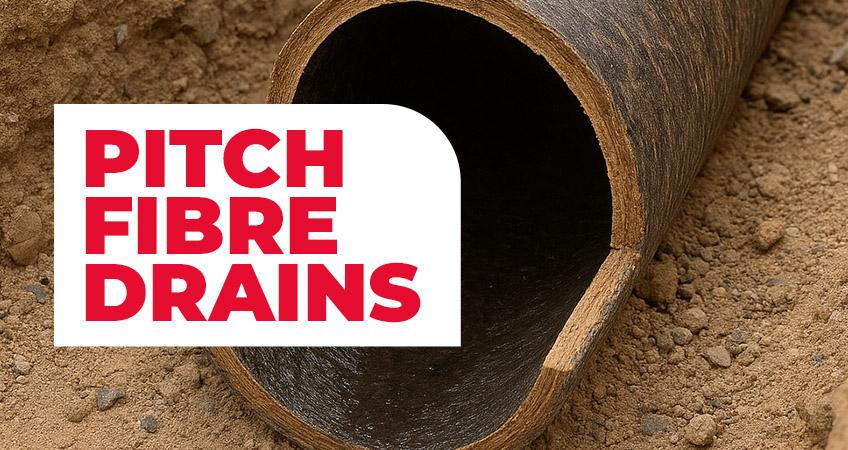If you’ve ever had a drainage contractor visit your property, suck air through their teeth, and utter the words “pitch fibre,” you’ll know it’s rarely good news. It’s the drainage equivalent of your mechanic saying, “Well, there’s your problem” while pointing at a mysterious, smoking part of your engine.
But what exactly are pitch fibre drains, and why do they cause such a headache for homeowners?
Pitch fibre drains are a type of pipework that became popular after the Second World War. At the time, they were hailed as a wonder material—cheap, lightweight, and easy to install. However, like many things from that era (we’re looking at you, avocado-coloured bathroom suites), they haven’t exactly aged gracefully. Many of these systems are now failing, causing blockages, collapses, and all sorts of underground drama.
This guide will walk you through everything you need to know about pitch fibre drainage, from its quirky history to how to handle repairs and potential asbestos concerns.
A brief history of pitch fibre pipes

Pitch fibre pipes first emerged in the late 19th century in the USA and Canada. However, they didn’t make their grand entrance in the UK until the post-war building boom of the late 1940s. They remained a popular choice for handling the normal waste water of new housing developments right through to the 1970s.
So, what are they made of? The recipe is simple: wood cellulose fibres were vacuum-impregnated with hot coal tar pitch. To give them some extra muscle, some UK manufacturers also added a sprinkle of asbestos to the mix. The result was a wood cellulose-impregnated pipe that was significantly cheaper and lighter than the traditional vitrified clay pipes, making it a darling of post-war construction and drainage systems.
The pros and cons of pitch fibre drains
While they might have a bad reputation today, pitch fibre pipes did have their advantages back in the day.
Advantages
- Lightweight and easy to handle: Their lack of heft made them easy to transport and install, speeding up construction.
- Cost-effective: They were much cheaper to produce than clay pipes, which was a huge plus during a period of rebuilding.
- Flexible: Their pliable nature meant they were less prone to cracking from ground movement compared to rigid clay pipes.
Disadvantages
Unfortunately, the list of disadvantages is a bit longer and is the reason we’re still talking about them today.
- Vulnerable to hot water and fats: Pitch fibre pipes don’t get on well with the high temperatures and fatty substances that come from modern appliances like dishwashers and washing machines. Over time, the coal tar softens, causing the pipes to deform, blister, and lose their shape.
- Prone to collapse: As the pipes deform, they can develop bulges or “bellies” that trap waste, leading to blockages. In the worst-case scenario, you can end up with collapsed pipes and subsequently no end of drainage problems.
- Susceptible to damage: High-pressure water jetting, a common method for clearing blockages, can easily damage the already-delicate structure of old pitch fibre pipes.
Lifespan and maintenance of pitch fibre drains

The expected lifespan of pitch fibre drainage is around 40 years. Given that most installations happened between the 1950s and 1970s, it’s easy to see why so many are now reaching the end of their service life.
Maintaining these systems is tricky. Regular drain cleaning is essential to prevent build-ups, but aggressive methods like high-pressure jetting can do more harm than good. A gentle approach is needed to avoid causing further damage. If you suspect you have pitch fibre pipes, it’s always best to let a professional drainage expert know before they start work.
Repair and replacement options
If a CCTV drain survey reveals your pitch fibre pipes are in a sorry state, you have a few options. The right choice depends on the extent of the damage.
Re-rounding and relining
For pipes that are deformed but haven’t completely collapsed, re-rounding is a clever, no-dig solution. A specialised tool, called a re-rounding cone, is pulled through the damaged section of the pipe. This process reshapes the pipe back to its original circular form.
Once the pipe is back in shape, a resin-impregnated liner is inserted and inflated. This liner then cures to form a new, tough pipe-within-a-pipe. This trenchless repair method avoids the disruption of excavation and gives the drain a new lease of life.
When to consider a full replacement
If the pitch fibre drain has completely collapsed, relining is no longer an option. In these cases, the only solution is to excavate and replace the damaged section with modern, durable uPVC pipework. While this is more disruptive and costly, it provides a permanent solution to the problem.
What about pitch fibre drain asbestos?

Yes, it’s true. Some pitch fibre pipes manufactured in the UK contain asbestos, which was added to strengthen the material.
The good news is that the asbestos is typically “bonded” within the coal tar, meaning the fibres are encapsulated and not easily released into the air. As long as the pipes are intact and undisturbed, they pose a low risk.
However, it’s a different story when it comes to damaged pitch fibre drains. If the pipes are broken, cut, or drilled, there is a risk of releasing harmful asbestos fibres. For this reason, any work on pitch fibre drains should be carried out by professionals who are trained in handling asbestos-containing materials safely. Never attempt to remove or repair pitch fibre pipes yourself.
Frequently asked questions
How do I know if I have the dreaded pitch fibre drainage?
If your house was built between 1950 and 1979, there’s a good chance you might have them. The only way to be certain is with a professional CCTV drain survey.
Can I claim for pitch fibre drain repairs on my home insurance?
This is a bit of a grey area. Many insurance policies exclude damage caused by gradual wear and tear, which is often how insurers classify failing pitch fibre pipes. Some policies specifically list pitch fibre as an exclusion. It’s always best to check your policy wording or speak directly with your provider.
What is the cost effectiveness of repairing pitch fibre drain pipes?
The cost depends on the method. Trenchless repairs like relining are generally more affordable than a full excavation and replacement. We can provide a free, no-obligation quote to give you a clear idea of the costs involved.
Let us sort out your drainage drama
Dealing with pitch fibre drains can be a real headache, but you don’t have to face it alone. Here at Any Drains Direct, we have the expertise and technology to diagnose and solve any pitch fibre problem, big or small.
Whether you need a CCTV survey to see what’s going on down there, a no-dig repair to get things flowing again, or a full replacement for a collapsed drain, our friendly and professional team is here to help. We’ll talk you through your options and provide a long-lasting, guaranteed solution with no hidden fees.
Don’t let your drains get the better of you. Get in touch with us today for a free, no-obligation quote and let’s get your pipes sorted.
 01732 667 688
01732 667 688


